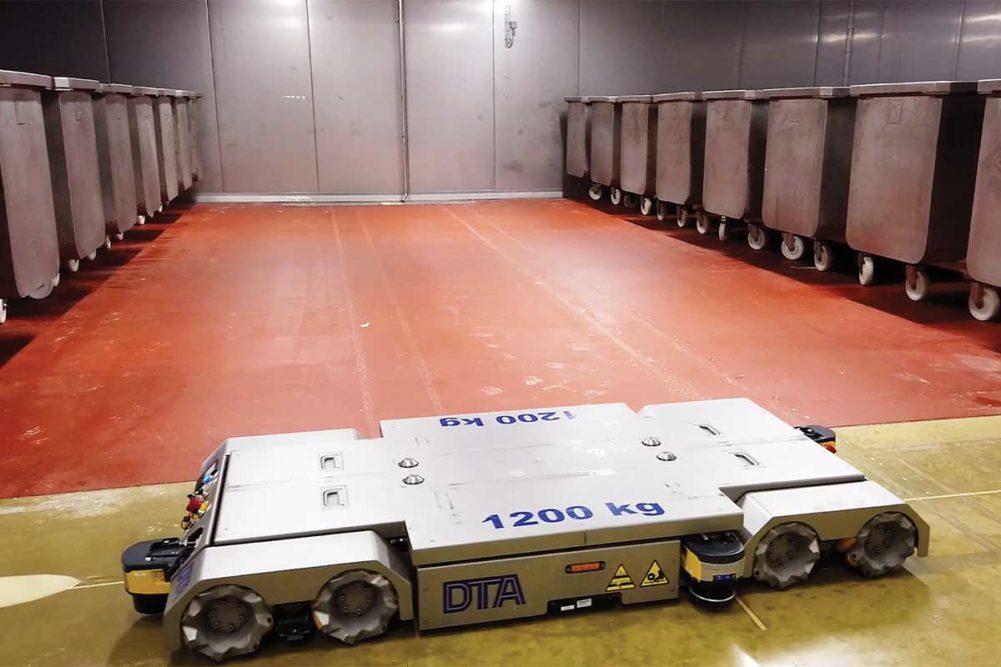One of the newest technologies linked to mixing is the use of automated-guided vehicles (AGVs), which move doughs around bakeries.
“The trend right now is to use AGVs to manage the fermentation time,” said Terry Bartsch, executive product manager, AMF Fusion, an AMF Bakery Systems brand. “Typically, when you have long fermentation times at high-volume rates like in cases of cracker dough production, people are managing the movement of the troughs for the required 18- or 20-hour fermentation time. We are using AGVs to replace this labor by collecting the trough from the mixer and placing it in the fermentation room.”
AGVs can also be used for bread and bun sponge and dough systems.
“The trend in bread and rolls is to go to straight doughs or liquid ferment and get away from this style of sponge and dough systems,” Bartsch said. “However, on the artisan side, they still want the fermentation time.”
He added that AMF has been customizing AGVs to fit the troughs to complement the mixers.
Both Diosna and VMI presented new AGV systems at iba, the international baking show held last month in Munich.
“We definitely recognize its growing relevance in automating bakery processes,” said Mélanie Gay, marketing manager, VMI. “While our automated mixing systems excel in delivering exceptional productivity, AGV technology brings an entirely new level of flexibility to the process while also ensuring great traceability. It’s a great option to automate existing manual lines but can also be utilized for new facilities with special challenges, such as space constraints.”
Knowledge and experience are the best ways to approach these challenges, and understanding the horsepower needed to ensure the right absorption required for each dough, Bartsch said.
“Our goal is to right-size the bowl for the batch size,” he said. “And to do that we will identify the correct horsepower to mix that dough. It’s not only absorption of the dough, but it’s also the speed of the agitator. Both can affect the horsepower supplied on the mixer.”
The rpm of the agitators could affect the sizing of the horsepower as well.
“If somebody has identified, ‘I want to run this at a nonstandard speed,’ you want to try to match the same torque value that you had at the standard speed,” Bartsch said. “You might be going up in horsepower not because of absorption, but you might be changing the horsepower based on agitator speed as well.”
Ronald Falkenberg, regional sales manager, Diosna, said that, as a general rule, Diosna mixers should be filled to two-thirds capacity to accommodate very stiff doughs.
Robotic systems allow for good control over complex mixing processes, such as sponges needing long fermentation, said Jerry Murphy, vice president of sales, Gemini Bakery Equipment.
“Very precise time sequences can be programmed and controlled, which in the end creates the ability to make very consistent products over longer periods of time,” he said. “The rest areas can be environmentally controlled to give very consistent and repeatable production results.”
This article is an excerpt from the November 2023 issue of Baking & Snack. To read the entire feature on Mixing, click here.





